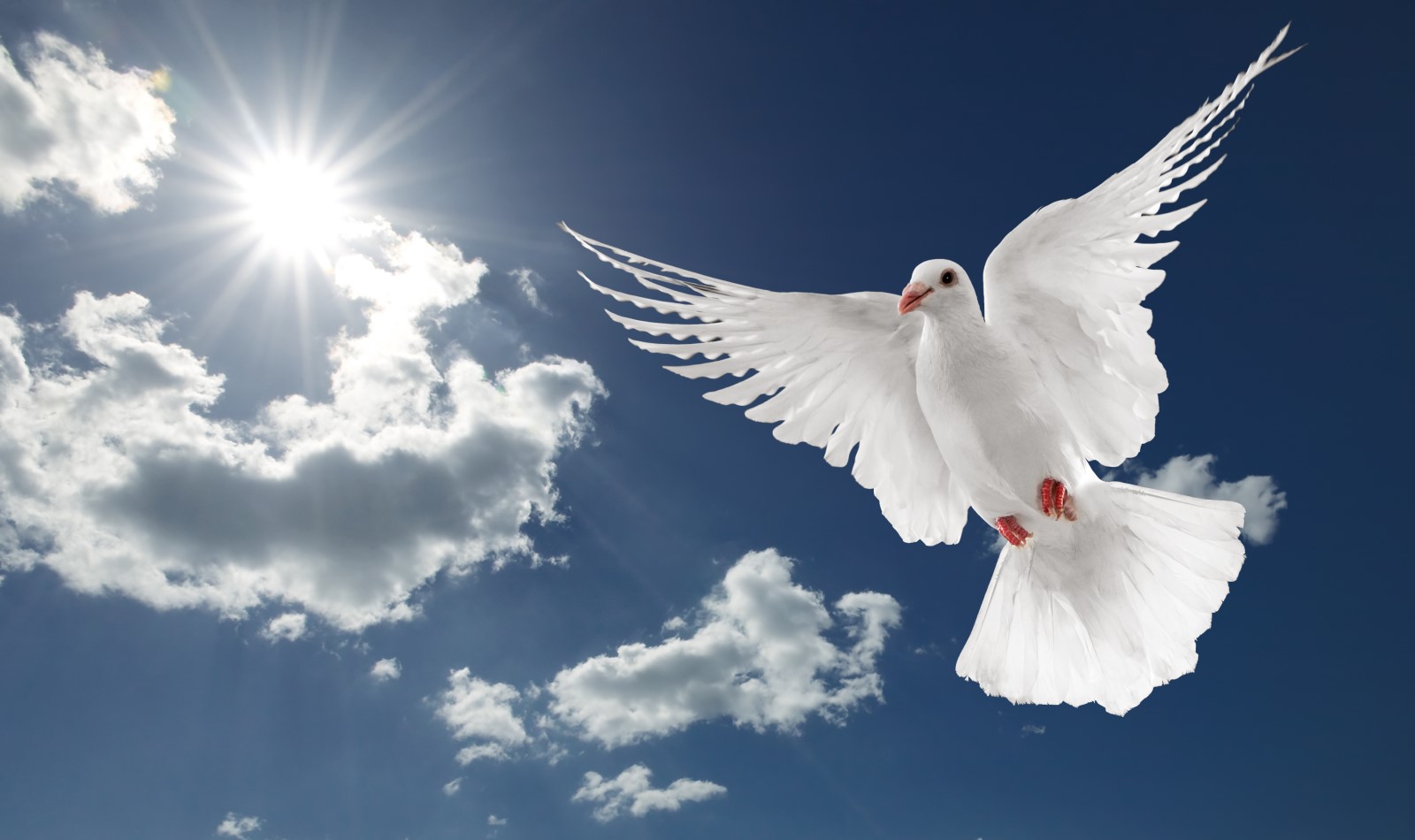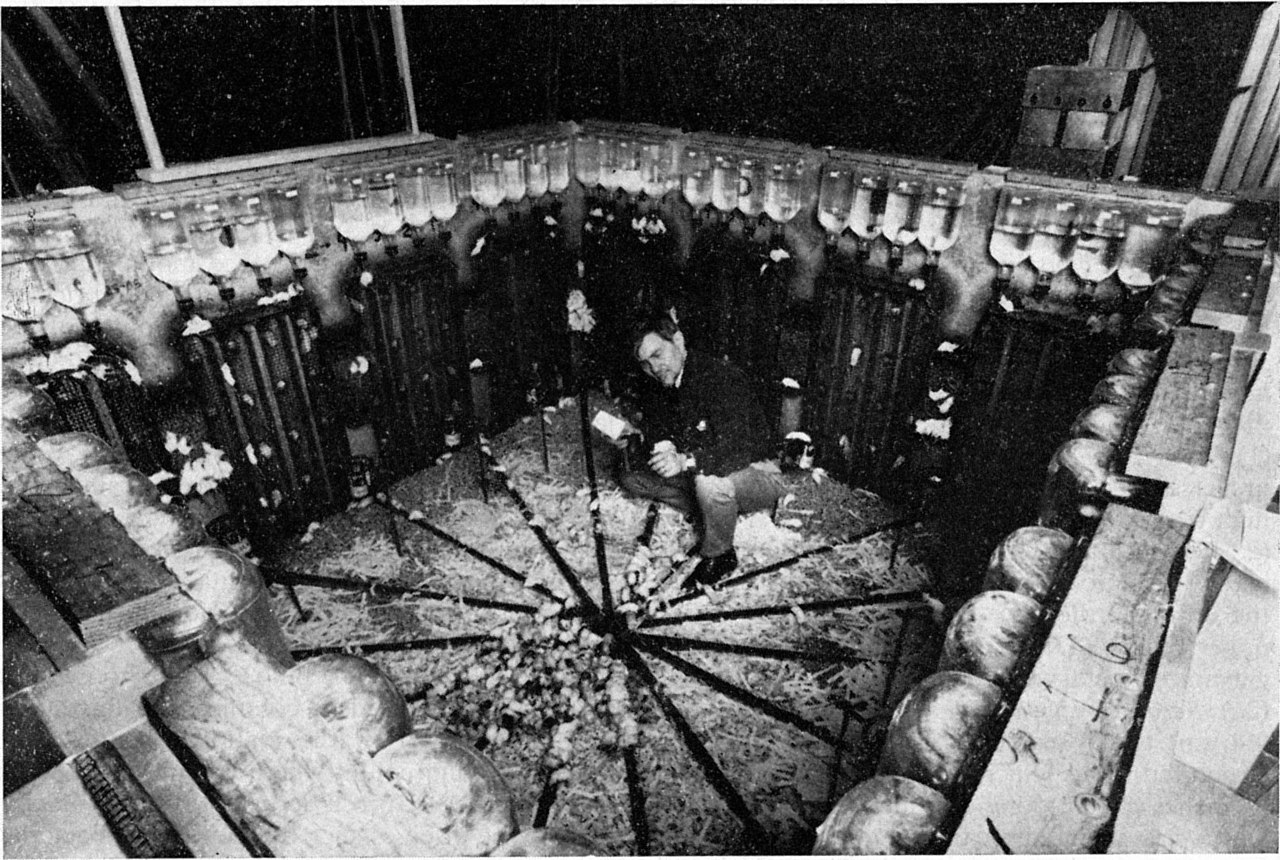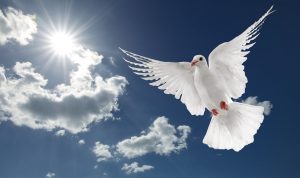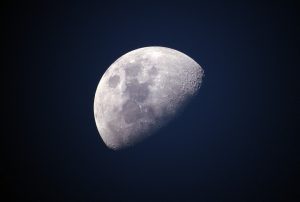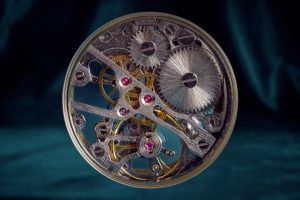Calhoun, J. B. A method of self-control of population growth among mammals living in the wild. Science, 1949, 109, 333-335.
Calhoun, J. B. The study of wild animals under controlled conditions. Annals of the New York Acadeluy of Science, 1950, 51, 1113-1122.
Calhoun, J. B. The social aspects of population dynamics. Journal of Mammalog, 1952, vol.33, no.2, 139-159.
Calhoun, J. B. Population density and social pathology. Scientific America, 1962, 206 (2). 139-148.

N.B.: Humans beings do not behave like rodents (at least some do not). Humans (can) have morals and ethics. Moreover, humans (can) have consciousness and free will. Comparative research is subject to considerable limitations and external validity (generalisability) is a methodological problem with regard to animal studies and complex social behaviour. Conclusions based on animal studies need to be cross validated.
During the early 1960s, the National Institute of Mental Health (NIMH) procured land in a rural area near Poolesville, Maryland, where a facility was constructed to accommodate various research projects, including those led by Calhoun. It was on this property that Calhoun conducted his renowned experiment, known as the mouse universes, with the most notable being universe 25.
In July 1968, the experiment began with the introduction of four pairs of mice into a specially designed habitat. The habitat, measuring 9 feet (2.7 m) square with 4.5-foot-high (1.4 m) sides, featured four groups of four vertical wire mesh “tunnels” on each side. These tunnels provided access to nesting boxes, food hoppers, and water dispensers. Despite ample provisions such as food, water, and nesting materials, and the absence of predators, the primary challenge imposed was the spatial constraint.
Initially, the population exhibited rapid growth, doubling every 55 days, and reached 620 by day 315. However, the pace of growth significantly slowed thereafter, with doubling occurring only every 145 days. Despite the experimental capacity for up to 3840 mice in nesting space, the final population on day 600 was a mere 2200. During the period between day 315 and day 600, a breakdown in social structure and normal behaviors became evident.
Noteworthy aberrations in behavior included premature expulsion of young before weaning, injuries to the young, increased homosexual behavior, inability of dominant males to defend their territory and females, aggressive actions by females, and heightened attacks among non-dominant males. After day 600, the social breakdown persisted, leading to a decline toward extinction. Females ceased reproduction, and males adopted solitary pursuits, avoiding courtship and combat. These males, termed “the beautiful ones,” focused solely on essential tasks like eating, drinking, sleeping, and grooming, displaying sleek, healthy coats and an absence of scars.
The study’s conclusions highlighted that when all available space is occupied, and social roles are filled, competition and stress induce a complete breakdown in complex social behaviors, ultimately leading to population demise. Calhoun viewed the fate of the mouse population as a metaphor for the potential fate of humanity, describing the social breakdown as a “second death” akin to the Biblical concept mentioned in Revelation 2:11.
Calhoun’s study has been cited by authors like Bill Perkins as a cautionary tale about the dangers of living in an “increasingly crowded and impersonal world.” However, interpretations varied, with medical historian Edmund Ramsden suggesting that the mouse society’s decline resulted from excessive social interaction rather than density alone. Another perspective proposed a fair distribution problem rather than a population issue in the mouse universe.

1962-calhoun“At the experiments’ end, the only animals still alive had survived at an immense psychological cost: asexual and utterly withdrawn, they clustered in a vacant huddled mass […] In the words of one of Calhoun’s collaborators, rodent “utopia” had descended into ‘hell’.”
— Edmund Ramsden
